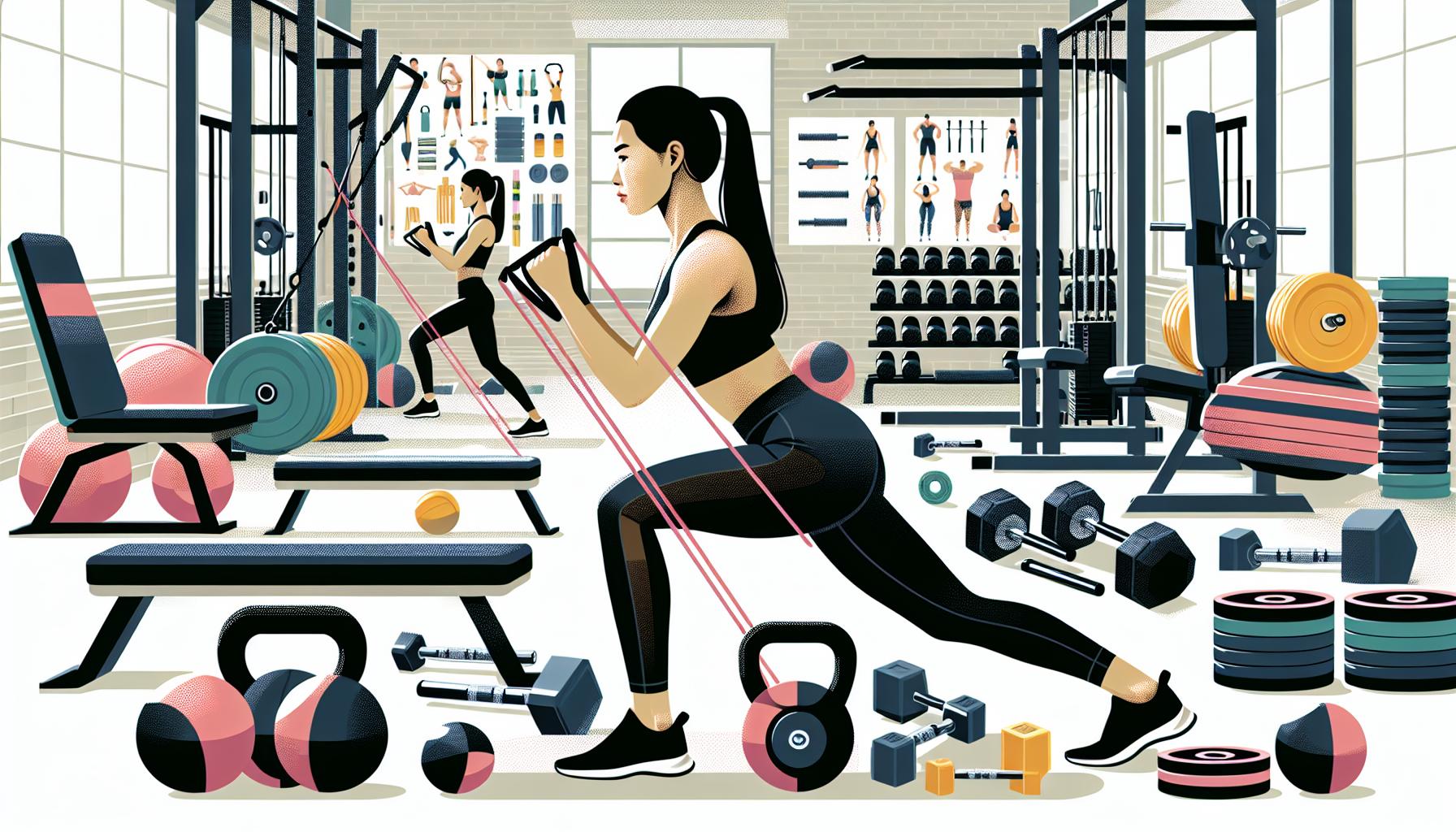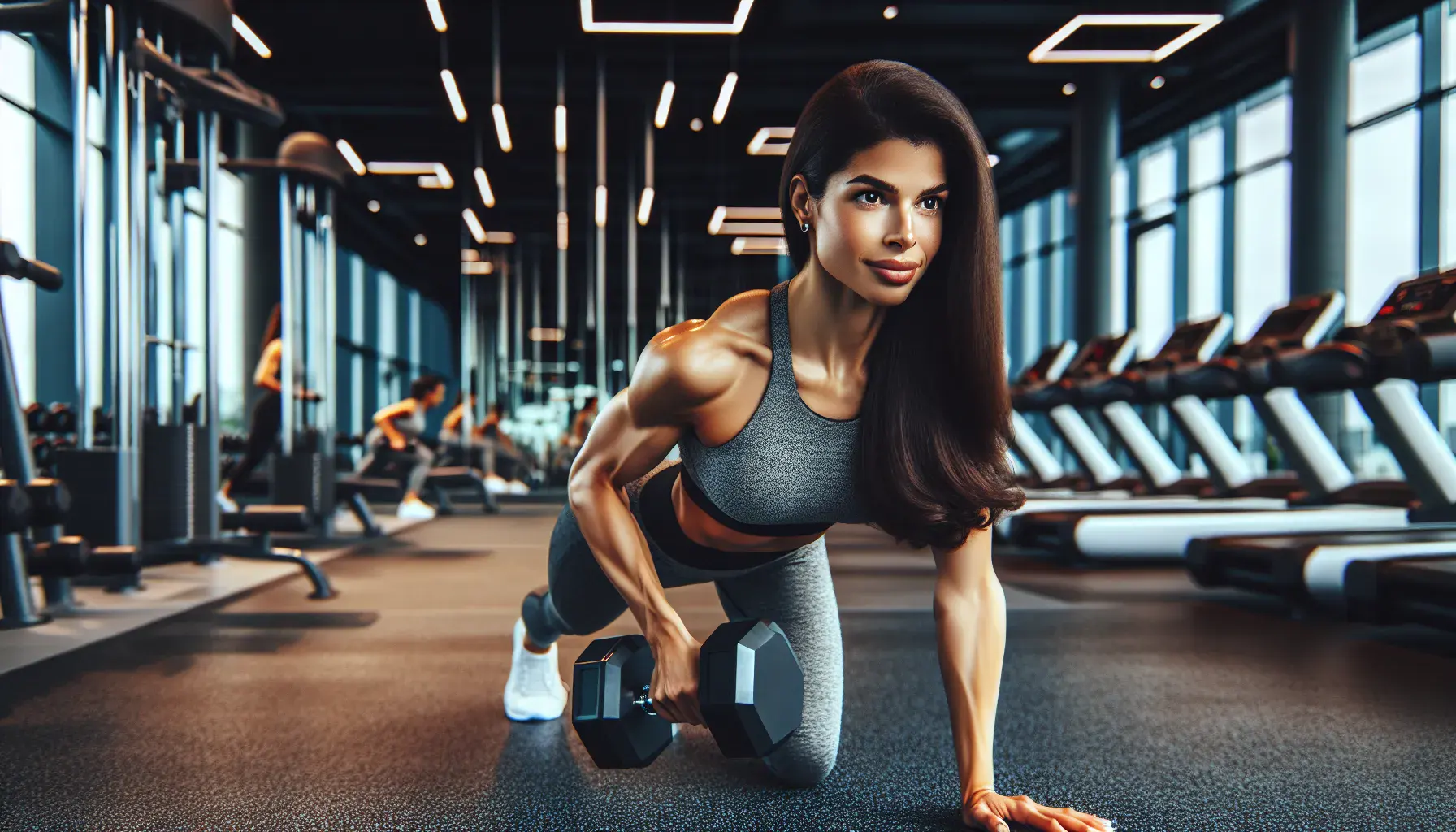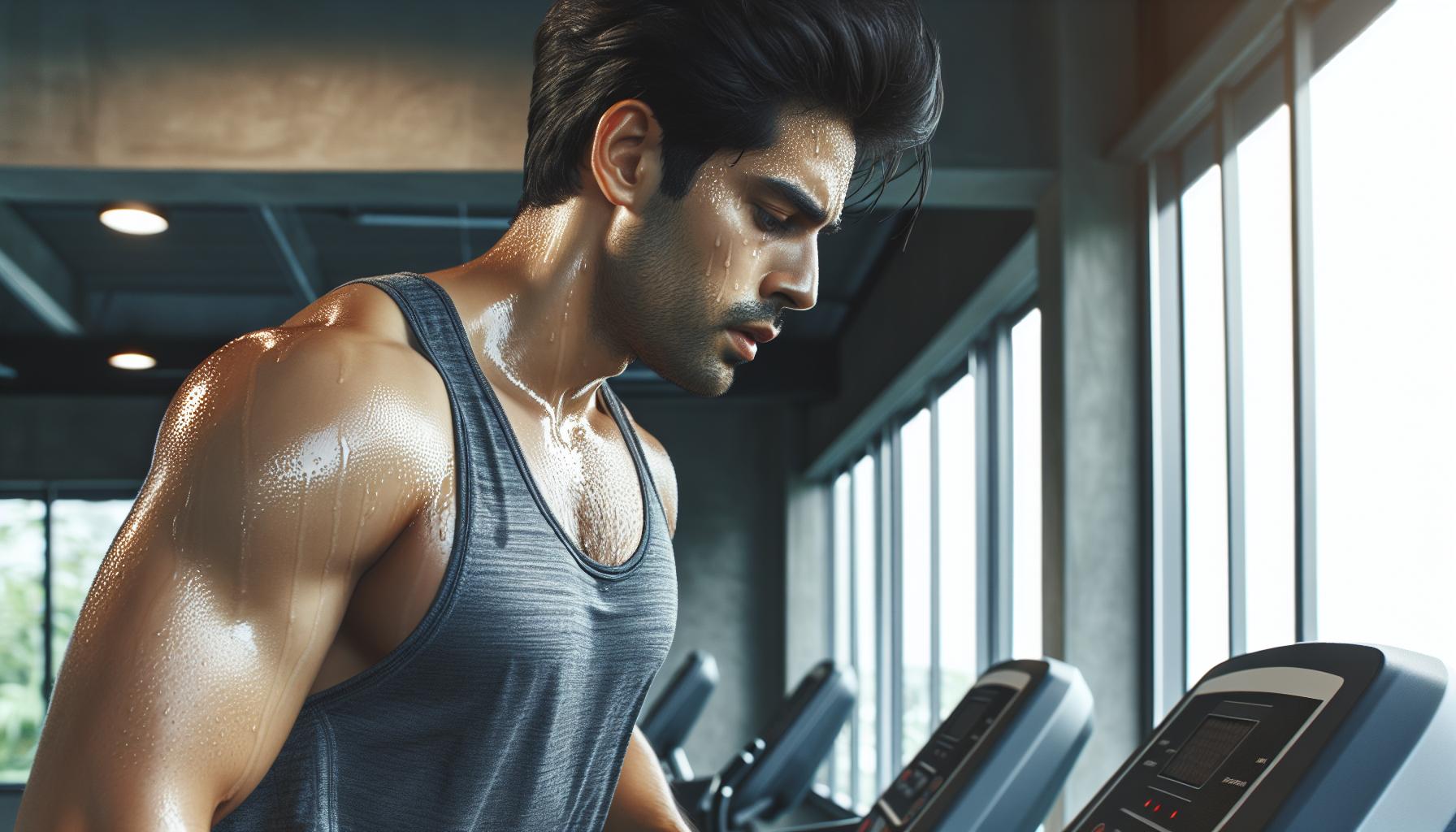Looking to sculpt your lower body and enhance your glute strength? Focusing on your gluteus minimus is key. Often overshadowed by its larger counterpart, the gluteus maximus, the gluteus minimus plays a crucial role in hip stabilization and movement. Strengthening this muscle can not only improve your athletic performance but also give your backside that lifted, toned look you’re aiming for.
But how do you effectively target such a specific muscle? Don’t worry, we’ve got you covered. With the right exercises and techniques, you can isolate and strengthen your gluteus minimus, leading to noticeable improvements in both form and function. Let’s dive into the best ways to work out your gluteus minimus and get those results you’re after.
Understanding the Gluteus Minimus
When you’re focusing on lower body training, it’s easy to overlook smaller muscles like the gluteus minimus. However, this muscle plays a pivotal role in your overall leg and hip function. Situated beneath the gluteus medius and partly covered by the gluteus maximus, the gluteus minimus is crucial for hip stabilization and abduction.
The gluteus minimus, often overshadowed by its larger counterpart, the gluteus maximus, is key to maintaining balance and preventing pelvic tilts during movement. This lesser-known muscle contributes significantly to your ability to walk, run, and maintain a strong, stable posture. Strengthening the gluteus minimus not only improves athletic performance but also aids in achieving a well-rounded and toned lower body appearance.
Why It Matters
Focusing on the gluteus minimus is more than just aesthetics; it’s about enhancing your body’s stability and mobility. Weakness in this muscle can lead to common issues such as lower back pain and knee injuries. By incorporating specific exercises that target the gluteus minimus, you can:
- Improve your hip stability
- Reduce the risk of injury
- Enhance athletic performance
Given its importance in daily movements and sports, understanding how to effectively engage and strengthen the gluteus minimus is critical. Exercises tailored to this muscle can drastically improve your physical health and contribute to a stronger, more balanced lower body. Whether you’re an athlete looking to enhance your performance or simply aiming for a toned aesthetic, focusing on the gluteus minimus will unlock new levels of strength and stability.
Importance of Strengthening the Gluteus Minimus
When you embark on a fitness journey, targeting the gluteus minimus isn’t just about aesthetics; it’s about building a foundation of strength that supports your entire lower body. Strengthening the gluteus minimus is pivotal for enhancing your balance, improving your posture, and ensuring your movements are fluid and efficient. This muscle might be small, but its impact on your overall athletic performance is substantial.
Why Focus on the Gluteus Minimus
- Injury Prevention: A strong gluteus minimus helps reduce the risk of injuries by stabilizing your hips and thighs. This stabilization is crucial whether you’re a competitive athlete or someone who enjoys a casual jog in the park.
- Enhanced Athletic Performance: For athletes, every bit of stability and strength counts. Strengthening the gluteus minimus can lead to improvements in speed, agility, and power, directly impacting performance in a variety of sports.
- Better Balance and Stability: As you age, balance becomes an increasingly important aspect of fitness. A solid gluteus minimus ensures you’re less likely to fall, maintaining your independence and quality of life.
Key Takeaways
Focusing on the gluteus minimus offers a multitude of benefits beyond just a well-rounded physique. It’s integral in promoting functional movements, enhancing athletic capabilities, and preventing injuries. To overlook this muscle is to miss out on these vital advantages. As you incorporate specific exercises targeting the gluteus minimus, you’ll notice improvements not just in your stability and balance but in your overall athletic performance as well. Remember, a strong foundation leads to greater achievements, and the gluteus minimus is a cornerstone of that foundation.
Targeted Exercises for the Gluteus Minimus
When focusing on building strength and stability in your lower body, incorporating targeted exercises for the gluteus minimus is essential. This small, yet powerful muscle plays a pivotal role in your mobility and overall athletic performance. Let’s dive into some effective exercises that specifically engage and strengthen the gluteus minimus.
Side-Lying Leg Raises are your go-to move for targeting the gluteus minimus. You’ll want to lie on your side, keeping your body in a straight line, and slowly raise the upper leg towards the ceiling before bringing it down. This exercise not only isolates the gluteus minimus but also engages your core. For optimal results, aim for 3 sets of 12-15 repetitions on each side.
Another impactful exercise is the Single-Leg Squat. This exercise requires balance and focus as it not only strengthens the gluteus minimus but improves coordination. Begin by standing on one leg, with your non-standing leg extended forward. Slowly lower yourself as if sitting back into a chair, then push back up to the starting position. Keep your movements controlled to avoid injury. Three sets of 8-10 reps per leg are recommended.
Incorporating Lateral Band Walks into your routine can provide significant benefits. This exercise uses a resistance band around your legs, just above your knees. Keep a slight bend in your knees and step to the side in a controlled manner, maintaining tension in the band. This sideways movement extensively works out the gluteus minimus. Perform 2-3 sets of 10-15 steps in each direction for maximum effectiveness.
These exercises, when executed properly and consistently, can significantly enhance the strength and stability of your gluteus minimus. Remember, quality over quantity ensures safety and better results. Incorporating these movements into your training routine will not only target the gluteus minimus but contribute to a well-rounded lower body workout regimen.
Tips for Maximizing Gluteus Minimus Workouts
To truly leverage the benefits of your gluteus minimus workouts, you’ll need to focus not only on the exercises themselves but also on how you’re performing them. Here are key strategies to ensure you’re maximizing the impact of your workout routine.
Prioritize Form Over Weight
Initially, it might seem productive to increase the weight or resistance for a better workout. However, when targeting the gluteus minimus, the quality of your form trumps the quantity of weight lifted. Ensuring proper alignment and movement engages the muscle effectively, reducing the risk of injury and ensuring targeted muscle development.
Incorporate Unilateral Exercises
Exercises that work one side of your body at a time, like Single-Leg Squats, are crucial. They help in identifying and correcting imbalances between the two sides of your body, ensuring both sides of your gluteus minimus are equally strong and flexible.
- Side-Lying Leg Raises
- Single-Leg Squats
- Lateral Band Walks
These unilateral exercises force your gluteus minimus to work harder for stabilization and balance.
Opt for Slow, Controlled Movements
Rapid movements often rely on momentum rather than muscle engagement. Slow, deliberate movements ensure that your gluteus minimus is fully activated throughout the exercise. A tip is to count to three during both the lifting and lowering phases of your workouts.
Rest and Recovery Are Key
Your muscles need time to recover and grow stronger. Incorporating rest days and ensuring you’re getting adequate sleep promotes muscle recovery and growth. Overworking your gluteus minimus can lead to setbacks, so listen to your body and rest as needed.
By adhering to these tips, you’ll maximize the effectiveness of your gluteus minimus workouts, paving the way for improved mobility, strength, and balance. Remember, consistency is as important as technique, so keep at it for the best results.
Incorporating Variation in Your Routine
When you’re aiming to strengthen and tone your gluteus minimus, adding variety to your workout routine can make a significant difference. By introducing new exercises and challenges, you keep your muscles guessing and prevent your workouts from becoming stagnant. This approach not only helps in effectively targeting the gluteus minimus but also aids in overall lower body development.
First and foremost, remember the golden rule: consistency is key, but so is variation. You might start with basic exercises and then gradually incorporate more complex movements as you progress. For example, after mastering the Single-Leg Squat, you could try adding resistance bands or weights to increase the intensity. Alternating between high-intensity and low-intensity workouts can also stimulate muscle growth in different ways.
In addition, focusing on exercises that work multiple muscle groups can be extremely beneficial. Movements like step-ups and lunges not only target the gluteus minimus but also engage the core, gluteus maximus, and leg muscles. This holistic approach ensures balanced strength and mobility, reducing the risk of injury.
Here’s a quick guide to diversifying your gluteus minimus workouts:
- Start with the basics: Master the form of essential exercises
- Add resistance: Use bands, dumbbells, or body weight to increase intensity
- Mix intensities: Blend high and low-intensity workouts for comprehensive muscle engagement
- Include compound movements: Opt for exercises that involve multiple muscle groups for balanced development
By incorporating these strategies into your routine, you’ll not only see improvements in your gluteus minimus strength and definition but also enhance your overall fitness level. Remember, the key to progress is in the variation. Keep challenging yourself with new exercises, and don’t be afraid to step out of your comfort zone.
Conclusion
Unlocking the full potential of your gluteus minimus isn’t just about sticking to a routine; it’s about evolving your approach to fitness. By embracing the strategies outlined, you’re not just working towards stronger glutes; you’re enhancing your overall physical health. Remember, progression and variety are your allies in this journey. Keep challenging yourself, stay consistent, and don’t shy away from mixing things up. Your lower body strength and fitness levels stand to gain immensely from this dynamic approach. So, take what you’ve learned and apply it to your workouts. The path to a stronger, more capable you is clear.
Frequently Asked Questions
What is the best way to improve gluteus minimus strength?
To improve gluteus minimus strength, gradually introduce complexity into your workouts by mastering basic exercises, using resistance like bands or weights, alternating high and low-intensity sessions, and including compound movements that engage multiple muscle groups.
How important is it to vary my gluteus minimus workouts?
Varying your gluteus minimus workouts is crucial to prevent stagnation, keep muscles engaged, and maximize workout effectiveness. Incorporating new challenges and exercises ensures continuous muscle development and prevents plateaus.
Can I improve my overall fitness by focusing on the gluteus minimus?
Yes, strengthening the gluteus minimus can significantly improve your overall fitness levels. It involves compound movements that engage multiple muscle groups, contributing to a well-rounded lower body development and enhanced physical performance.
What should I do if my progress stagnates?
If your progress stagnates, introduce new exercises or increase the complexity of your current workout routine. Adding resistance, alternating between different intensity levels, and incorporating varied types of movements can help overcome plateaus and continue progressing.
Why is consistency important in gluteus minimus workouts?
Consistency is essential in gluteus minimus workouts to achieve optimal results. It ensures that the muscles are regularly challenged and developed over time. However, it’s also important to introduce new exercises and challenges to avoid stagnation, making consistency and variation equally important.







